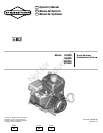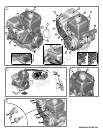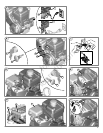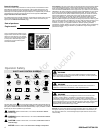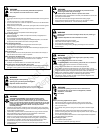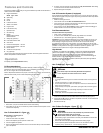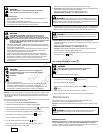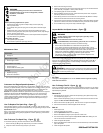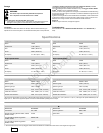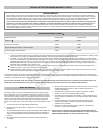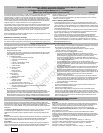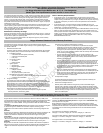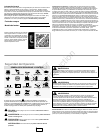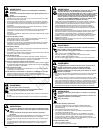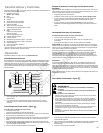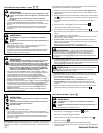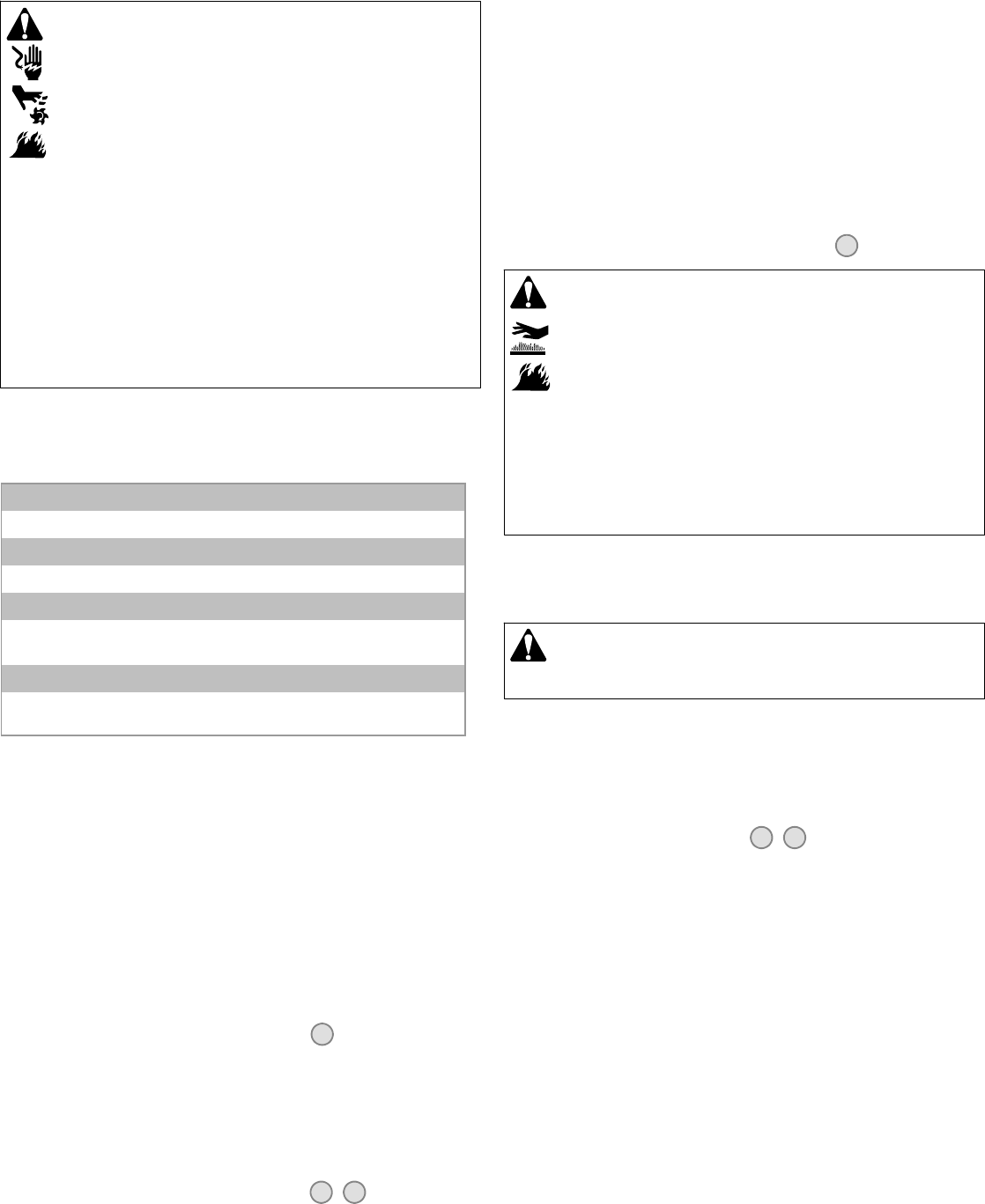
8
BRIGGSandSTRATTON.COM
Unintentional sparking can result in fire or electric shock.
Unintentional start-up can result in entanglement, traumatic
amputation, or laceration.
Fire hazard
WARNING
Before performing adjustments or repairs:
Disconnect the spark plug wire and keep it away from thespark plug.
Use only correct tools.
Do not tamper with governor spring, links or other parts to increaseengine
speed.
Replacement parts must be of the same design and installed in the same
position as the original parts. Other parts may notperform as well, may damage
the unit, and may result in injury.
Do not strike the flywheel with a hammer or hard object becauset he flywheel
may later shatter during operation.
When testing for spark:
Use approved spark plug tester.
Do not check for spark with spark plug removed.
Maintenance Chart
First 5 Hours
Change oil
Every8HoursorDaily
Check engine oil level
Every 50 Hours or Annually
Change engine oil
Check muffler and muffler guard
Annually
Replace spark plug
Check valve clearance *
* Not required unless engine performance problems are noted.
Carburetor And Engine Speed Adjustment
Never make adjustments to the carburetor or engine speed. The carburetor was set at
the factory to operate efficiently under most conditions. Do not tamper with the governor
spring, linkages, or other parts to change the engine speed. Ifany adjustments are
required contact a Briggs & Stratton Authorized Service Center for service.
NOTICE: The equipment manufacturer specifies the maximum speed for the engine as
installed on the equipment. Do not exceed this speed. If you are unsure what the
equipment maximum speed is, or what the engine speed is set to from the factory,
contact a Briggs & Stratton Authorized Service Center for assistance. For safe and
proper operation of the equipment, the engine speed should be adjusted only by a
qualified service technician.
How To Replace The Spark Plug - Figure
7
Check the gap (A, Figure 7) with a wire gauge (B). If necessary, reset the gap. Install
and tightenthe sparkplug to the recommendedtorque. Forgap settingor torque, seethe
Specifications section.
Note: In some areas, local law requires using a resistor spark plug to suppress ignition
signals. If this engine was originally equipped with a resistor spark plug, use the same
type for replacement.
How To Access The Spark Plug - Figure
8 9
To access the spark plug, the snow hood must be removed as follows:
1. Remove the key (A, B Figure 8). Keep the key out of reach of children.
2. Grasp the choke control knob (J) and pull up to remove.
3. Remove the mounting screws (C).
4. Carefully remove the top part of the snow hood (D, Figure 9). Do not disconnect the
primer hose (E), if equipped, or the key switch wire (F).
5. The spark plug (G) can now be accessed.
6. Before installation of the snow hood, make sure that the primer hose, if equipped,
and the key switch wire are connected.
7. Mount the top part of the snow hood to the snow hood base (H). Make sure the top
interlocks with the base. Secure with the mounting screws.
8. Align the slots in the choke control knob with thet abs on the choke shaft (I) andthen
push down to install. If the knob is not installed correctly, the choke will not operate.
9. Do not install the key until you are ready to start the engine.
Inspect Muffler And Spark Arrester - Figure
10
Running engines produce heat. Engine parts, especially muffler,
become extremely hot.
Severe thermal burns can occur on contact.
Combustible debris, such as leaves, grass, brush, etc. can catch fire.
WARNING
Allow muffler, engine cylinder and fins to cool before touching.
Remove accumulated debris from muffler area and cylinder area.
It is a violation of California Public Resource Code, Section 4442, to useor
operate the engineon anyforest-covered, brush-covered, orgrass-covered land
unless the exhaust system is equipped with a spark arrester, as defined in
Section 4442, maintained in effective working order. Other states or federal
jurisdictions may have similar laws. Contact the original equipment
manufacturer, retailer, or dealer to obtain a spark arrester designed for the
exhaust system installed on this engine.
Remove accumulated debris from muffler area and cylinder area. Inspect the muffler (A,
Figure 10) for cracks, corrosion, or other damage. Remove the spark arrester (B), if
equipped, and inspect for damage or carbon blockage. If damage is found, install
replacement parts before operating.
WARNING: Replacement parts must be of the same design and installed
in the same position as the original parts. Other parts may not performas well, may
damage the unit, and may result in injury.
Air Filter
This engine is not equipped with an air filter. DO NOT use this engine for anything
other than snow removal.
How To Change The Oil - Figure
2 11
Used oil is a hazardous waste product and must be disposed of properly. Do not discard
with householdwaste. Check with yourlocal authorities,service center, or dealerfor safe
disposal/ recycling facilities.
Remove Oil
1. With engine off but still warm, disconnect the spark plug wire (A) and keep it away
from the spark plug (Figure 11).
Note: To access the spark plug wire, you must first remove the snow hood from the
engine. See How To Access The Spark Plug.
2. Remove the oil drain cap (E, Figure 2). Drain the oil into an approved receptacle.
3. After the oil has drained, install and tighten the oil drain cap.
Add oil
Place engine level.
Clean the oil fill area of any debris.
See the Specifications section for oil capacity.
1. Remove the dipstick (C, Figure 2) and wipe with a clean cloth.
2. Pour the oil slowly into the engine oil fill (B). Do not overfill. After adding oil, wait
one minute and then recheck the oil level.
3. Install and tighten the dipstick.
4. Remove thedipstick andcheck the oillevel. Itshouldbe at the topof the fullindicator
(D) on the dipstick.
5. Install and tighten the dipstick.
Not for
Reproduction



